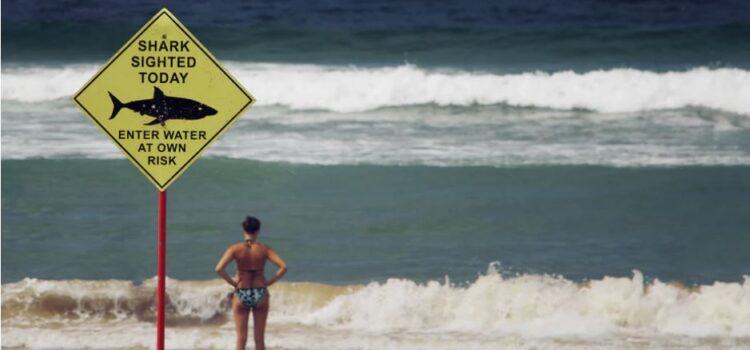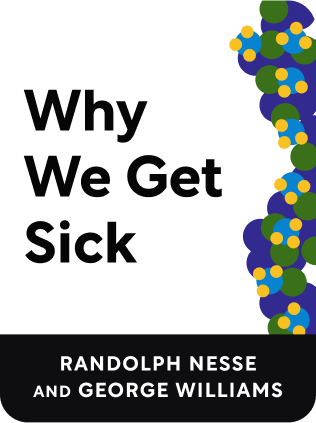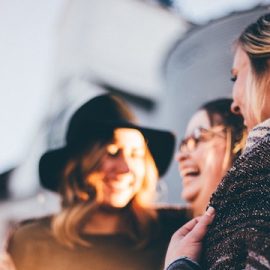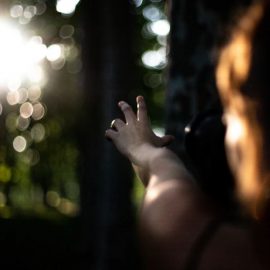

This article is an excerpt from the Shortform book guide to "Why We Get Sick" by Randolph Nesse and George Williams. Shortform has the world's best summaries and analyses of books you should be reading.
Like this article? Sign up for a free trial here .
Why and how do we learn fear? What is the difference between innate and learned fear?
Pain and fear are vital functions for survival. Innate fears are the ones we are born with and learned fears are flexible and are taught to us by others or by experience.
Keep reading for more about the benefits of fear and pain.
Evolutionary Benefits of Fear and Pain
Pain and fear are often considered negative conditions to be avoided. But the benefits of fear and pain serve vital functions in survival. Pain signals that tissue is damaged; fear signals that danger might be nearby, and so caution is warranted.
Both pain and fear are useful to avoid injury. Blocking either can worsen damage. People who lack the capacity to feel pain almost all die by age thirty; people born without fear tend to end up in the emergency room or the morgue.
How Do We Learn Fear?
Fear of some things is innate, since that mistake even once is very costly. A rabbit is born to be afraid of foxes, since slipping up once can cost a rabbit its life. But innate behavior is inflexible—it can’t mold to new situations that would merit more appropriate responses.
More flexibly, other fears can be learned so as to be situationally useful. A fawn might stare blankly at an approaching wolf until its mother flees. Then the fawn learns that wolves are probably bad and should be run away from, and the fawn passes this lesson to her children. These types of fears are not hardwired; they can be unlearned, and they can be extinguished when the cue is removed.
Humans have the benefit of reasoning and memory, so we can learn indirectly. We know that fire is dangerous and we install smoke alarms without personally knowing anyone who died in a fire.
Conditioned Avoidance
Avoidance can be conditioned more easily to some cues than others.
- Researchers found it easier to train dogs to avoid a peppermint smell associated with stomach illness than a noise associated with illness. Smell and toxic food are more strongly linked than sound and toxic food, which makes sense—in everyday life, smells are more likely than sounds to be reliable indicators of bad food than sounds are.
- Likewise, dogs learn to avoid electric shocks more readily when paired with a sound, than when paired with a smell. Sounds more reliable indicators of acute injury than smell are.
- Some phobias are learned more readily than others. Monkeys can learn a fear of snakes by watching a video faster than fear of flowers.
Our modern environment has changed a lot in the past thousands of years, but we haven’t yet evolved visceral responses to new environmental dangers.
- We’re closely attuned to the dangers of fire, and we pull our hand quickly from a hot pan on the stove. But we’re not as sensitive to extreme cold—we don’t have the same visceral avoidance of liquid nitrogen and dry ice.
- Light-skinned races are vulnerable to sunburn because they evolved over hundreds of thousands of years in less sunny areas. But now, one race can live in all sorts of environments, and pale people aren’t adapted to sunny areas. They overexpose themselves to sun, having no visceral avoidance of sunlight. Hours later, a sunburn appears and causes pain. But the sunburn is so far removed from the sun exposure that it doesn’t evoke as strong a lesson.
Response to Injury
When repairing an injury, the body needs to make a series of balances:
- Between using scarce resources vs. speed of healing. Faster healing requires taking more resources from the rest of the body.
- Between allowing the person to use the injured body part vs. protection and healing. Using a burned hand can give the person more capability, but that will delay healing.
- Between recovering injured cells vs. destroying injured cells.
As with infection, when we consider injury as a disease, we need to distinguish between impairment from injury from adaptive responses that heal injuries.
- During a sunburn, the immune system is triggered to clean up dead cells, even though there isn’t an infection. But the immune system might also interfere with healing by destroying cells that can repair themselves.
- The ideal approach is to figure out what aspects of healing are helpful and unhelpful, and to suppress the latter.

———End of Preview———
Like what you just read? Read the rest of the world's best book summary and analysis of Randolph Nesse and George Williams's "Why We Get Sick" at Shortform .
Here's what you'll find in our full Why We Get Sick summary :
- Why evolution hasn't rid humans of all diseases
- How reproductive fitness is more important than overall survival
- How you evolved to dislike the sound of a baby crying






